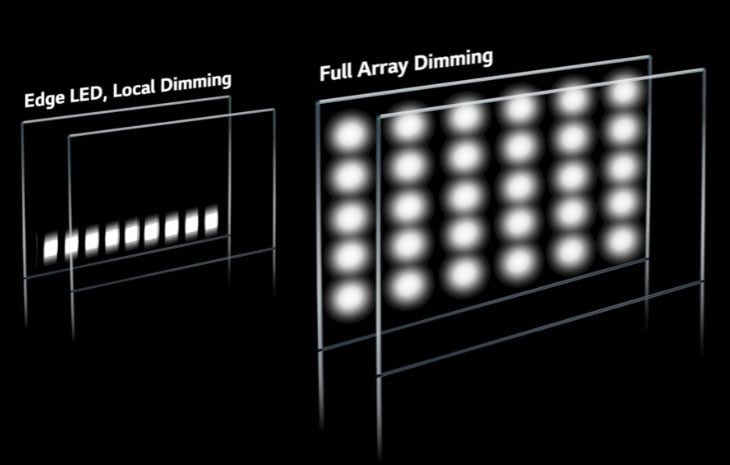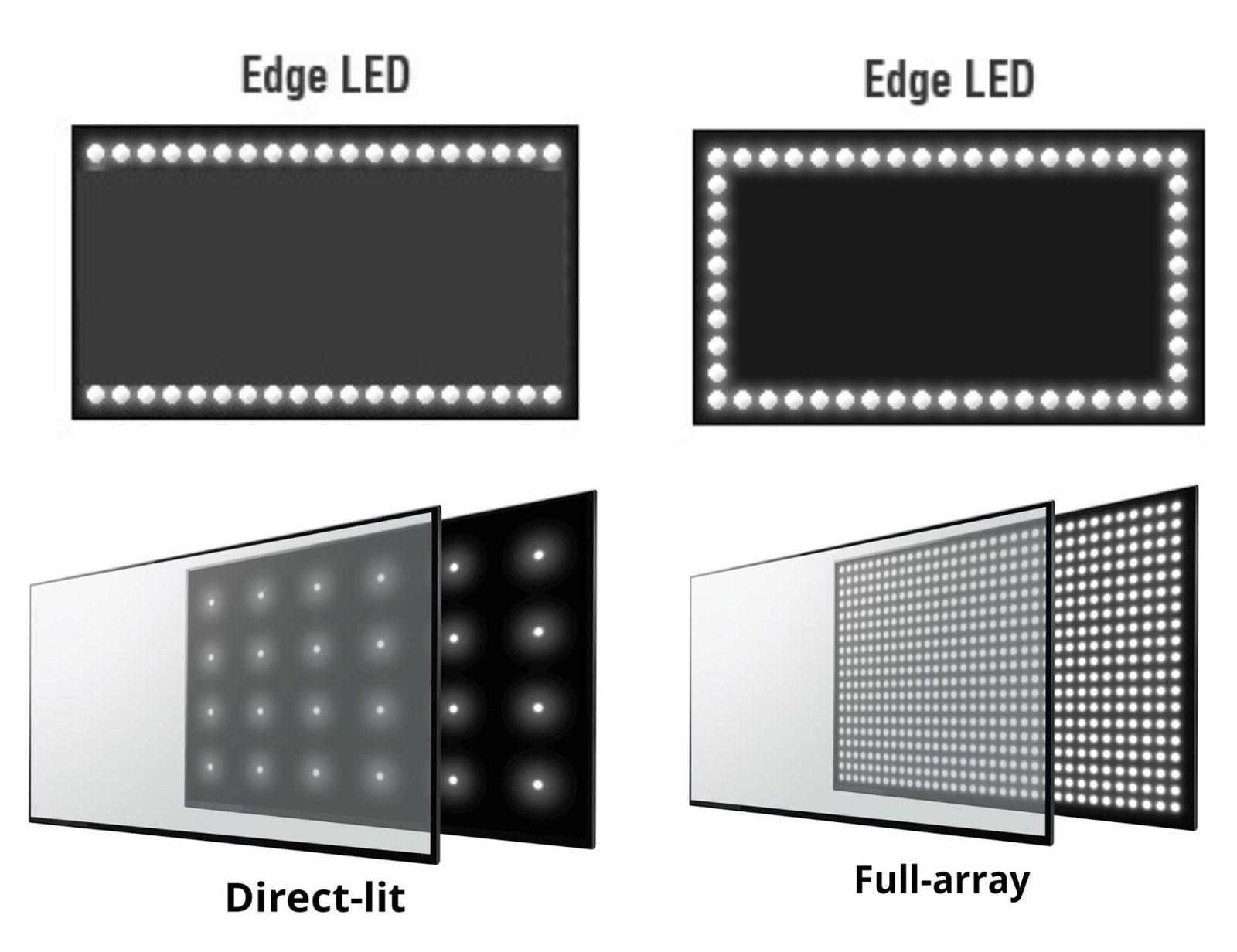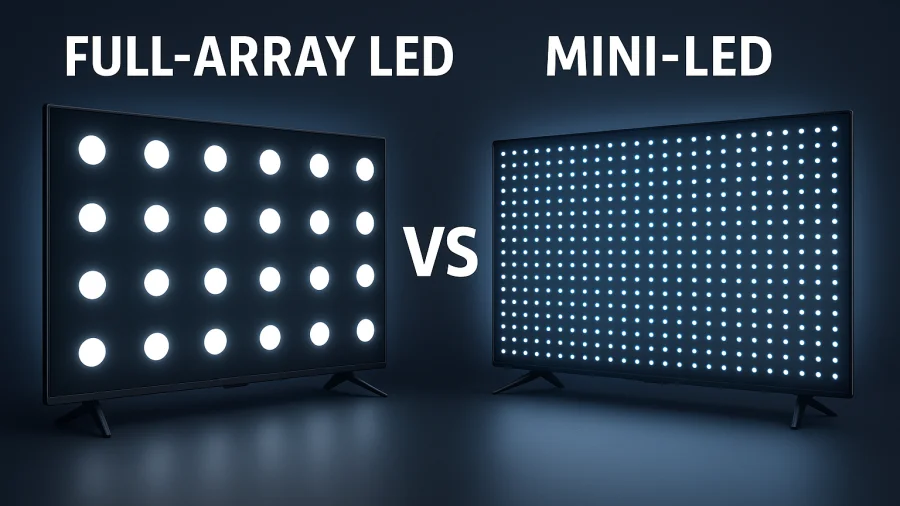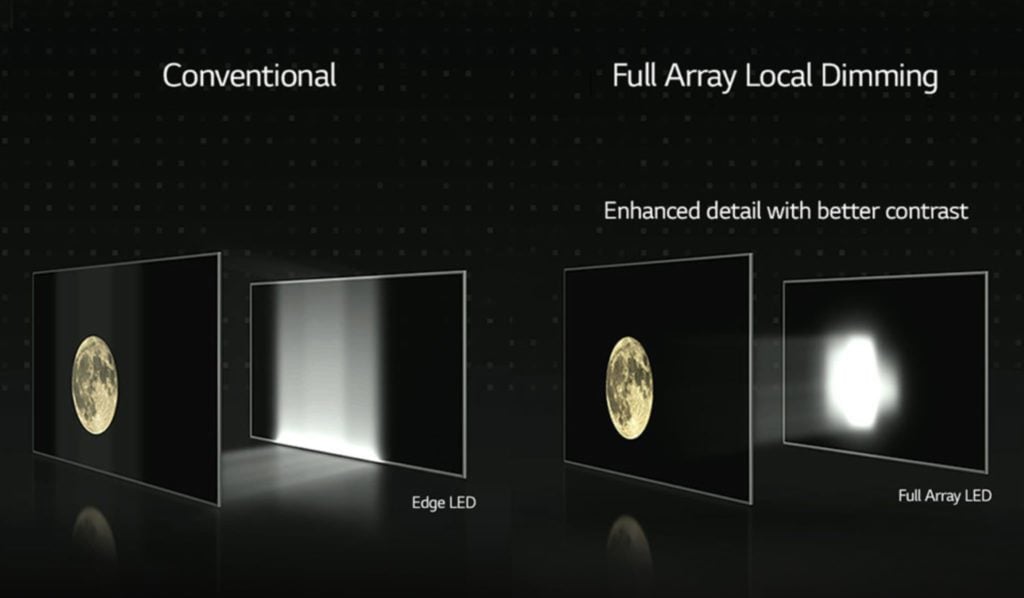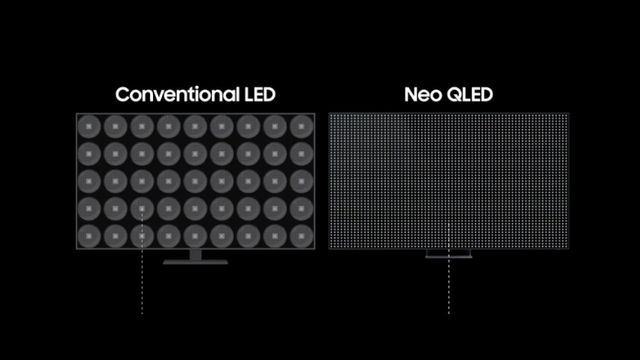Direct Lit Vs Full Array Which Is Better

In the ever-evolving world of television technology, consumers are constantly bombarded with new terms and features promising the ultimate viewing experience. Two prominent technologies battling for supremacy in the LCD TV market are Direct Lit and Full Array Local Dimming (FALD). Understanding the nuances of these backlighting systems is crucial for making an informed purchase that aligns with your viewing preferences and budget.
This article delves into a detailed comparison of Direct Lit and Full Array technologies, examining their strengths, weaknesses, and suitability for various viewing environments. We will explore how these backlighting methods impact contrast, brightness, color accuracy, and overall picture quality, empowering you to navigate the complexities of the TV market.
Understanding Backlighting in LCD TVs
LCD TVs, unlike OLED TVs, require a backlight to illuminate the liquid crystal display. This backlight shines through the LCD panel, creating the images we see. The placement and control of this backlight significantly impact the TV's performance.
Direct Lit: Simplicity and Affordability
Direct Lit TVs feature LEDs positioned directly behind the entire LCD panel. This is a simpler and more cost-effective approach compared to other backlighting methods. However, it typically results in less precise light control.
Because the LEDs illuminate the entire screen simultaneously, Direct Lit TVs often struggle to achieve deep blacks and high contrast. This can lead to a washed-out picture, especially in dark scenes.
Full Array Local Dimming (FALD): Precision and Contrast
Full Array Local Dimming (FALD) takes a more sophisticated approach. Instead of LEDs spread evenly behind the panel, FALD TVs use zones of LEDs that can be individually controlled.
This allows the TV to dim or turn off LEDs in dark areas of the screen while keeping them bright in lighter areas. The result is significantly improved contrast, deeper blacks, and a more dynamic picture.
According to rtings.com, a reputable source for TV reviews, FALD generally offers a superior viewing experience compared to direct lit, particularly in dark room environments.
Contrast, Brightness, and Color Accuracy
The primary difference between Direct Lit and FALD lies in their ability to control contrast. Contrast is the difference between the brightest and darkest parts of an image, and it's crucial for a realistic and immersive viewing experience.
Direct Lit TVs often struggle to achieve high contrast ratios due to the lack of local dimming. This means blacks can appear grayish, and details in dark scenes can be lost. Conversely, FALD TVs, with their ability to dim specific zones, deliver significantly higher contrast ratios and deeper blacks. This allows for more detail and a greater sense of depth in the image.
Brightness levels can be similar between the two technologies, though flagship FALD models often achieve higher peak brightness. Color accuracy is largely determined by the TV's panel technology and processing, not solely by the backlighting method. However, improved contrast can enhance perceived color vibrancy.
Viewing Environment Matters
The ideal TV for your needs depends heavily on your viewing environment. In a brightly lit room, the advantages of FALD may be less noticeable. The ambient light can mask the improvements in contrast.
In a dark room, however, the difference between Direct Lit and FALD becomes much more apparent. The deeper blacks and higher contrast of FALD will create a more immersive and enjoyable viewing experience. If you primarily watch TV in a darkened room, FALD is generally the better choice.
Budget also plays a significant role. Direct Lit TVs are typically more affordable than FALD TVs. If you're on a tight budget and primarily watch TV in a brightly lit room, a Direct Lit TV may suffice.
The Future of Backlighting Technology
While FALD represents a significant improvement over Direct Lit, it's not without its limitations. "Blooming," where light bleeds from bright areas into dark areas, can sometimes be visible, especially around bright objects against a dark background.
Manufacturers are constantly working to improve FALD technology, increasing the number of dimming zones to minimize blooming and enhance precision. Mini-LED backlighting, a newer technology, uses significantly smaller LEDs and a higher density of dimming zones, offering even greater control over contrast and brightness.
Ultimately, the choice between Direct Lit and FALD depends on your budget, viewing environment, and priorities. Understanding the strengths and weaknesses of each technology empowers you to make an informed decision and find the perfect TV for your needs.



